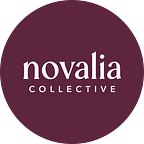Let’s… not go back to a “normal” workplace
For the past year, we’ve been working with our partners and collaborators to envision their ideal workplace. We found it surprising that many people had trouble thinking about what they wanted their workplace to look and feel like. Employees are often being tested on if they fit into the existing structures and systems. Most companies have moved away from the term “culture fit” and instead have shifted to “culture add” yet this assumes that there is already a pre-established culture and that there is someone determining whether or not you add to it. So when we asked our partners and collaborators what they wanted, it required deep introspection and creative exercises for them to develop a response.
Lately we’ve been thinking a lot about dreaming up possibilities. When the pandemic started to take a global toll, Arundhati Roy published a powerful and insightful article called, The pandemic is a portal. In it she states, “Historically, pandemics have forced humans to break with the past and imagine their world anew. This one is no different. It is a portal, a gateway between one world and the next.” The pandemic has brought about a reckoning with our daily lives in more ways than we can list here, but we would like to focus on how it has affected work environments and culture and specifically, office work cultures where employees had the option to work from home.
We are seeing people slowly going back to the workplace. According to an index of 10 metro areas compiled by security company, Kastle Systems, 28% of office workers are back in their buildings. Here in the Bay Area, there are murmurs that companies will return in-person in September, following the leads of giant tech companies like Google and Facebook. As the date gets closer, more teams are beginning to have conversations on what this could look like, balancing expectations of how we once worked with one another in the workplace and the newfound remote and hybrid options. If you’re beginning to navigate this at your place of work, here are three tips to approach this conversation:
1. Have a structured and facilitated conversation on what people want. It is important in this process that everyone’s voice is heard and that everyone gets equal opportunity to share. Each person has unique needs and preferences and we cannot assume that because someone works on our team or shares similar demographics that they want the same thing. This is especially true if you’re a manager — your voice might carry more weight than others so you need to be especially aware of power dynamics as you approach this conversation.
Suggested Activity:
Hold a Conversation Cafe to give each person an equal amount of time to talk about their ideal workplace.
2. Challenge the status quo. When the pandemic first started, a lot of our clients believed new conflicts and challenges were popping up because they weren’t in-person. While some of this might be true, the reality is the pandemic highlighted and amplified issues that were laying dormant, masked by friendly faces and a social culture that promotes social harmony at all cost. If you’re truly looking to make a change and support your team, you need to challenge yourself to think beyond what you know and what you are used to. As we continue to progress and advance as a society, our workplaces need to evolve. The pandemic has shown us that we cannot linger in the status quo any longer.
Suggested Activity:
Hold a discussion group with case studies and articles that talk about what you’re trying to challenge like this article on banning work on Wednesdays.
3. Create a plan everyone can consent to. We may never reach a full consensus on how we envision the ideal workplace. As unique individuals with varying degrees of needs, we have to accept the fact that we can never be 100% aligned on everything all the time. When envisioning an ideal workplace situation, teams could consider various options and discuss whether they can consent to it or not. The threshold for consent is based on a person’s range of tolerance. For example, if someone from your team suggests a 2-day work-from-home, with the flexibility of remote whenever necessary for important personal needs, the rest of the team can assess their range of tolerance on this idea.
Photo Credit: Circle Forward
As your company develops return-to-work plans, ensure that your team’s voice, needs, and ideas are the foundations of the next iteration of your workplace. This is critical as the Wall Street Journal is reporting a high rate of job turnovers due to factors such as lack of work flexibility, burnout, and career and life shifts. Let us know in the comments what you are hoping will change once you, your team, or the rest of the country starts to return to the workplace.
If you’re looking for partners and collaborators to support you through this process or if you have any follow up questions, feel free to reach out to us at contact@novaliacollective.com or visit our website at https://www.novaliacollective.com/offerings
